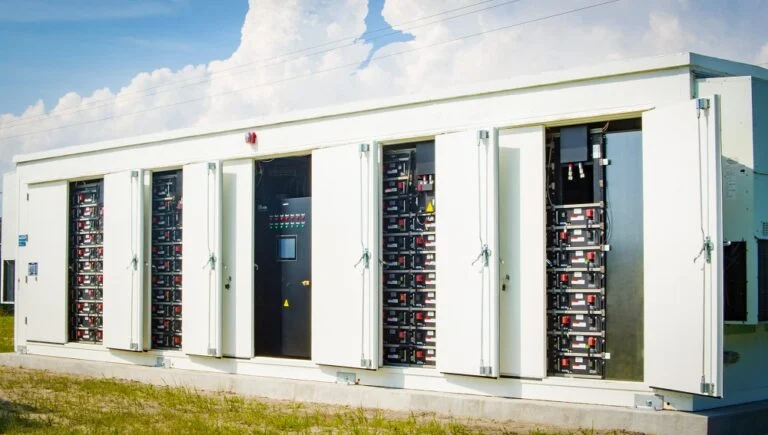
Feb . 05, 2024 15:11 Back to list
Top Three Benefits of Energy Storage to Utilities
The utility-scale battery energy storage system (BESS) market in the US has experienced significant growth in 2021, according to the American Clean Power Association (ACP). Installations of BESS increased by 196%, reaching a total capacity of 2.6GW. In terms of energy, utility-scale BESS capacity quadrupled to 10.8 GWh over the course of the year. Currently, there are 187 projects in the pipeline for battery storage, with a combined capacity of 12.5GW, of which 48 are stand-alone projects and 139 are hybrid projects paired with renewable power sources.
Energy storage has become an essential consideration for utilities as transmission rates have seen double-digit increases in various markets. Rising transmission costs have prompted more transmission owners to invest in infrastructure, leading to the expectation that rates will continue to rise. Therefore, utilities are increasingly looking to energy storage as a solution to reduce capacity and transmission costs, as well as to hedge against future cost increases. Energy storage is often referred to as the "Swiss Army knife" of solutions due to its versatility in different applications.
The primary benefits of energy storage for utilities include cost reduction, decreased carbon emissions, integration of renewable energy, and improved reliability. Energy storage can help utilities lower costs through peak shaving, frequency regulation, demand response, and system resiliency, among other services. It is also a valuable tool in the Non-Wires Alternative (NWA) toolkit, which aims to defer or eliminate the need for costly infrastructure upgrades. By deferring or eliminating infrastructure costs, both utilities and their customers can benefit.
The sustainability aspect of energy storage is another significant benefit for utilities. Traditional peaker plants, which are expensive, inefficient, and carbon-intensive, are often used to meet peak demand. However, battery storage systems, particularly when paired with solar energy, produce zero on-site greenhouse gas emissions. They can be charged using clean energy during off-peak times and discharged during peak times, thereby replacing the need for peaking generation or reducing reliance on fossil fuels. This approach can defer the construction of new peaker plants, retire existing fossil generation, and avoid costly transmission and distribution system upgrades. Governments have even established standards to accelerate the deployment of renewables and energy storage, contributing to enhanced grid resilience and power quality.

Energy storage also enhances reliability. With an increasing number of customers generating their own power, the grid is experiencing power flows in multiple directions, which it was not designed for. Energy storage can address this challenge by "firming up" renewable resources and increasing capacity and resiliency during critical times, thus avoiding or deferring the need for new infrastructure. Additionally, energy storage can provide additional local and system capacity when it is most needed.
When considering energy storage, utilities must make key decisions such as whether to own the system outright or contract for its services with a partner. Both options have their benefits, and the choice depends on individual needs and circumstances. Other key decisions include determining the system size and location, the type of technology to be used, and the operations and maintenance requirements.
The value of energy storage can be realized immediately, making it essential to start the conversation and take action. ACDC, an energy storage solution provider, aims to help utilities reduce costs, increase sustainability, and improve reliability through the deployment of battery storage systems. This presents a win-win-win situation, benefiting customers, the environment, and ACDC itself.
In conclusion, the growth of the utility-scale battery energy storage system market in the US presents significant opportunities for utilities. Energy storage offers various benefits, including cost savings, sustainability, and improved reliability. By reducing costs, decreasing carbon emissions, integrating renewable energy, and enhancing grid resilience, energy storage provides a flexible and efficient solution for utilities. With the future of energy storage already upon us, it is crucial for utilities to assess their energy storage needs and engage in discussions with solution providers like ACDC.
Will be removed if infringing
Reference website:https://resources.convergentep.com
-
Stackable Battery System: Revolutionizing C&I Energy Storage with Suzhou ACDC
NewsJul.21,2025
-
Revolutionizing EV Charging with Suzhou DC Quick Charging Stations Solutions
NewsJul.21,2025
-
Revolutionize Your Power Needs with Suzhou ACDC's Portable Power Station Solutions
NewsJul.21,2025
-
Outdoor Integrated Temperature Control Cabinet: Elevating Energy Storage Cabinet Efficiency
NewsJul.21,2025
-
Container Type Energy Storage System: Revolutionizing Energy Storage with Stackable Battery Solutions
NewsJul.21,2025
-
Advanced Self-Cooling Energy Storage Cabinet Solutions
NewsJul.21,2025























